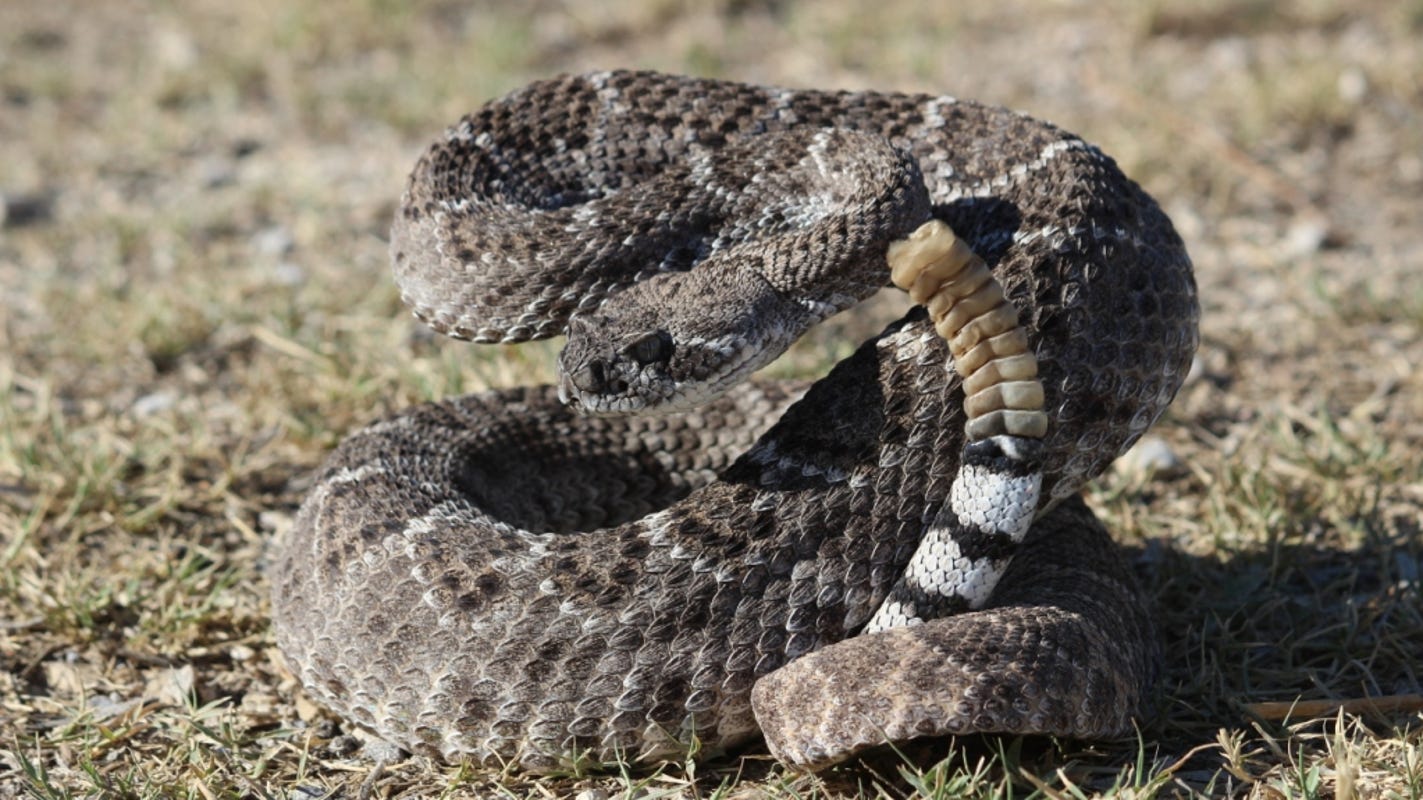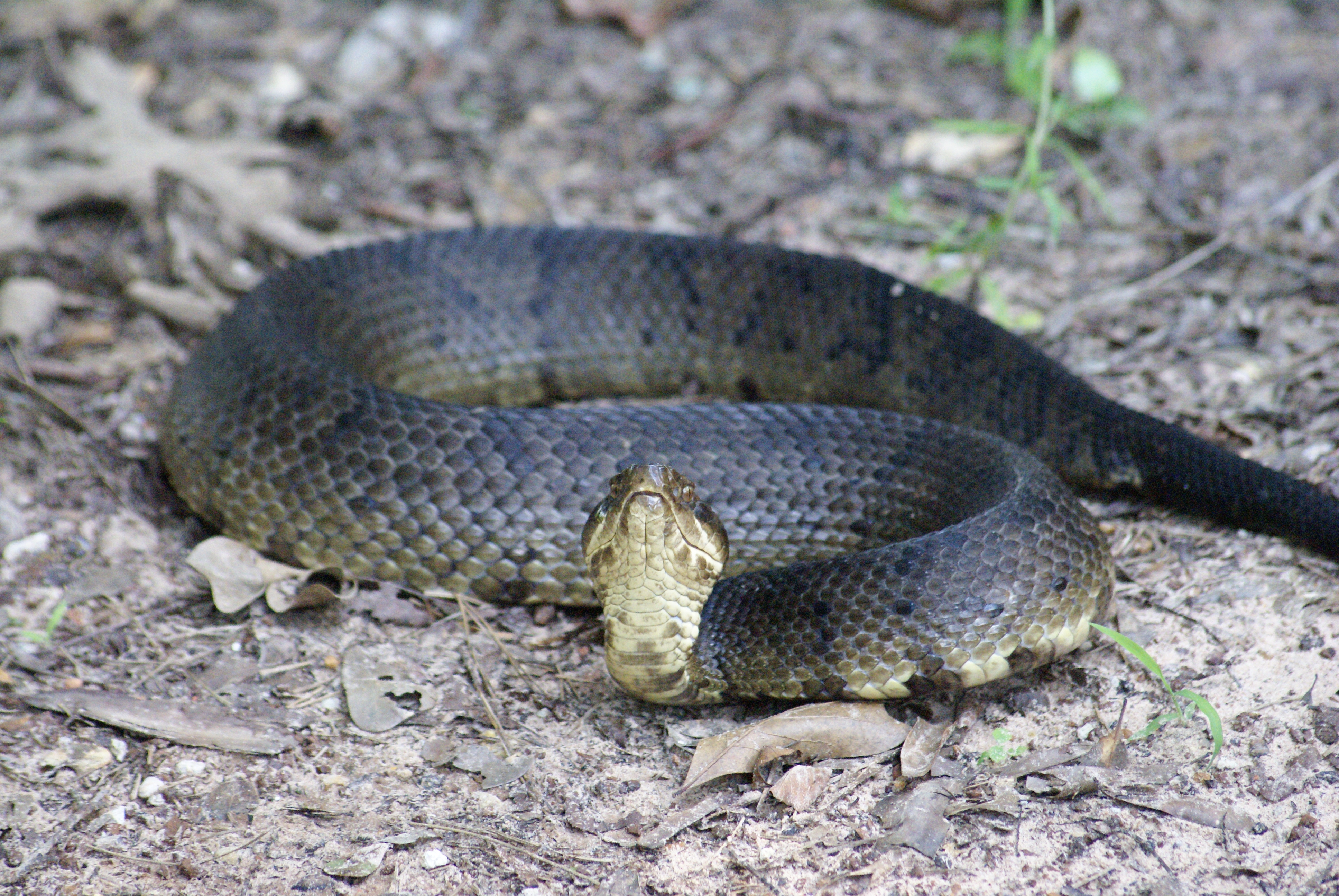According to the Texas Parks and Wildlife there are 15 dangerous species or subspecies of snakes in Texas. Here are some of the more common venomous snakes and how to stay safe in your home and in nature.
Rattlesnake

This is the most common and widespread venomous snake in Texas, found in all but the easternmost part of the state. These snakes averages 3 1/2 to 4-1/2 feet in length, and can reach seven feet. There are several different subspecies of this snake and they are all marked different and can be found on rocky ledges, wooded areas, in bushes, and grass covered plains.
Copperhead

These snakes are found in rocky areas and wooded bottomlands and are rare in dry areas. In the spring they can be found along streams and rivers, as well as in weed-covered vacant lots. There are three subspecies of Copperheads in Texas and they vary from 20-30 inches to 2 ½ feet in length.
Cottonmouth

This snake averages about 3 ½ feet in length and are found in the Eastern part of the State near rivers, ponds, coastal marshes, etc.
Coral Snake

Several harmless snakes are similarly marked, but never with the red and yellow touching. Coral snakes are usually about 2 ½ feet in length and are found in the southeastern half of Texas in woodlands, canyons and coastal plains.
Safety In The Field
Since venomous snakes are common in the rural areas of Texas, it is important for ranchers, hunters, rural residents, outdoor enthusiasts and others that frequent these areas to exercise caution.
Be careful where you put your hands and feet - don't reach or step until you can see the bottom.
Never step over a log without first seeing what is on the other side. If you must move a log - use a long stick or garden tool first, to ensure snakes are neither under, on or around these favored habitats.
Use a flashlight when moving about, even in your home yard, at night.
Animal burrows make excellent habitats for snakes - don't reach in without first checking.
Wear protective clothing if working in areas where you suspect snakes nearby. Heavy footwear, snake proof trousers and/or leggings will help reduce your risk.
Stop moving/be still when snakes are known to be nearby until you know where they are. Allow the snake to retreat. If you must move, back slowly and carefully away from the snake.
Safety Around The Home
As our population continues to grow, and people continue to move into 'pristine' and 'untouched' areas, encounters with venomous snakes are going to occur. Many of these encounters occur around the home, which is why incidents of bites close to home are statistically high.
Snakes in general, converge around homes for the specific purposes of seeking food and shelter.
Tips and guidelines to follow to help prevent snakebite around the home:
- Keep wood piles, brush piles, trash dumps and livestock pens as far as possible from the residence. When working in these areas, exercise caution. Never put an arm or leg into something if you cannot see the bottom.
- Keep storage areas and livestock sheds/barns as neat as possible. Be aware that tools and materials stored on the floor as potential areas where snakes may shelter.
- Be aware that overturned boats, tarps and similar objects are also potential places of shelter for transient snakes moving through the area.
- Remember snakes are adept at finding their way through small openings. Keep this in mind when entering crawl spaces, basements, garages and similar areas.
Source article for this fact sheet is TPWD. https://tpwd.texas.gov/education/resources/texas-junior-naturalists/snakes-alive/venomous-texas-snakes